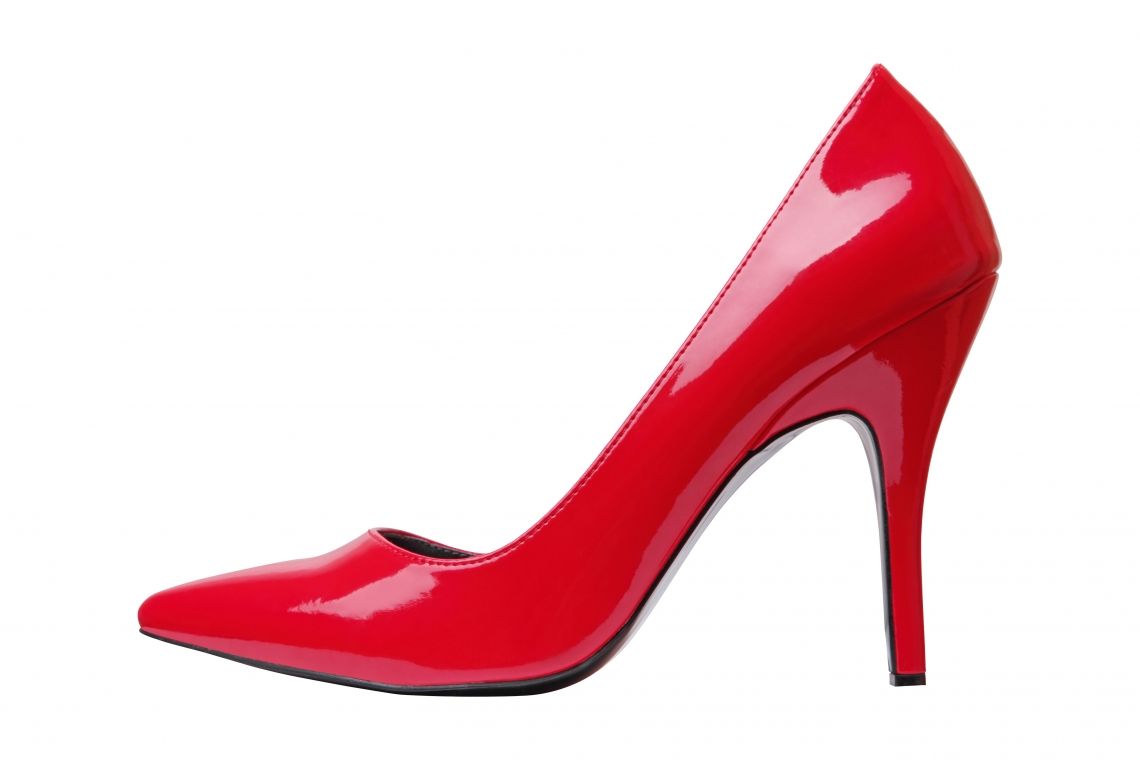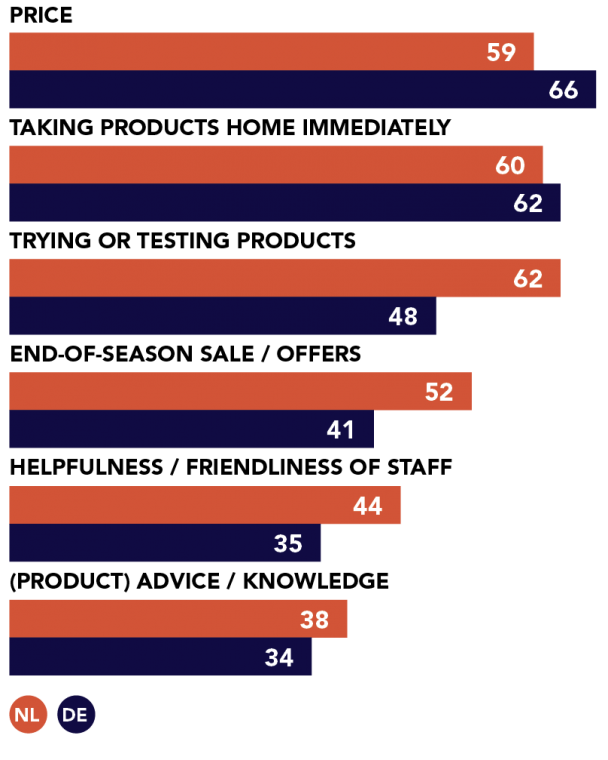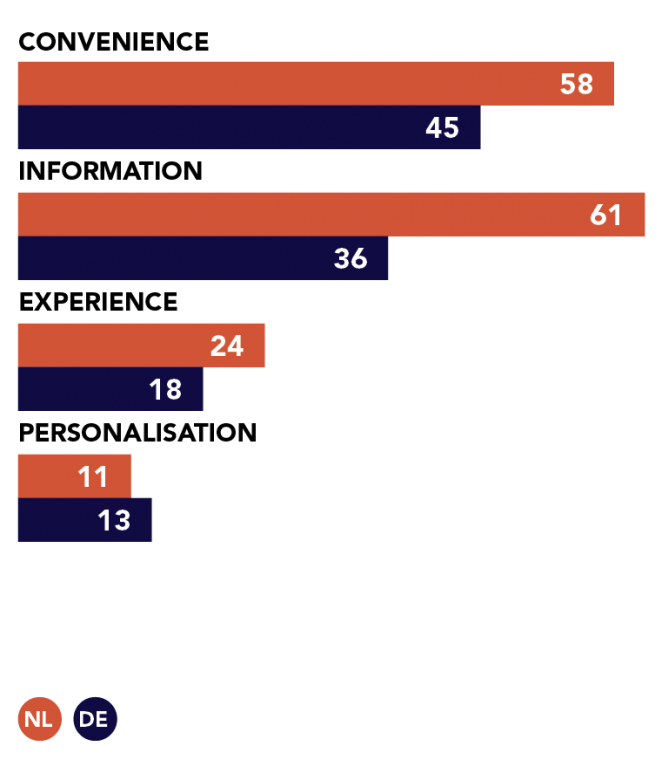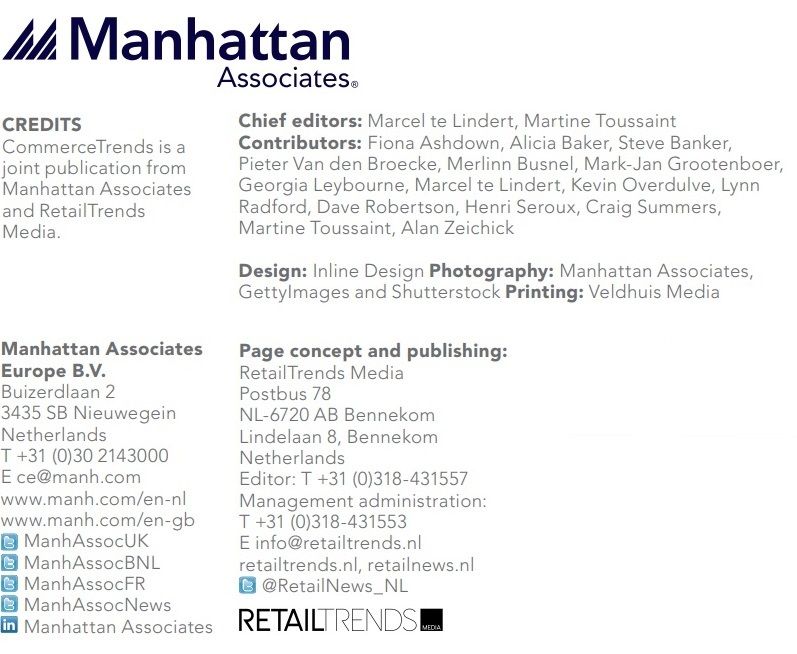Wasn’t life easy in logistics back in the days when customers still came to our stores, and took their purchases home with them? We had to ensure we had the right items in stock, of course, but we could focus our logistics efforts on improving efficiency and reducing costs. But while smooth-running logistics had some impact on retailers’ margins, it had little to no effect on their revenue. Logistics was simply not a significant factor in creating a competitive edge.
How times have changed! Today the customer is a mighty ruler, dictating how retailers should behave with just a wave of their hand. What matters most is not the cost of those logistics activities, but that the goods end up in the right place at the right time and at the right speed. After all, the ruler’s wrath is merciless: one false move can be fatal, and consumers move onto another competitor who can meet their demands and expectations.
Henri Seroux, Senior Vice President EMEA at Manhattan Associates, explains that consumers now take note of retailers’ logistics performance: “Logistics never used to be an everyday topic of conversation, but now it’s not unusual for logistics professionals to suddenly find themselves discussing their work at parties or with their friends and family. Logistics is back in fashion!” Warehouse managers have got a sparkle in their eyes once more, he says. By fulfilling orders at lightning speed, personalising products & parcels and by offering customers additional services, they can really make a difference. “Logistics has become an essential part of an organisation’s business strategy. Who would’ve thought that warehouse management could ever be cool and sexy?”
Ideally, everyone involved in the process should have that same glimmer – from the warehouse operatives who pick and pack the items, the drivers who jump in and out of their vans to personally deliver (and sometimes even install) the ordered goods, to the store associates who provide tailored advice to assist shoppers in their buying decisions. Eager, enthusiastic and motivated people inject that extra touch of spirit that is so important in the battle for the consumer’s favour nowadays.

"Now that good employees are harder to find, it is more important than ever to build close-knit teams of people with drive and enthusiasm."
Henri Seroux, Senior Vice President EMEA, Manhattan Associates
“Good employees can be hard to find, it is now more important than ever to build close-knit teams of people with drive and enthusiasm. Across Europe there is already a shortage of truck drivers, as well as also increasingly difficult to recruit warehouse operatives across large parts of the continent. The use of mobile and flexible robots in warehouses and self-driving trucks could partially solve these problems in the longer term, but we will still need humans for the foreseeable future. And it’s important to deploy people in roles that make the very most of their talents and abilities,” states Seroux.

Technology can also help store associates to generate more revenue. Armed with a tablet that provides tailored advice based on each consumer’s customer profile, online activity and purchase history, store associates transform into personal shopping assistants. Not only that, but employees who add more value for shoppers feel better about themselves and are more motivated. “Imagine how a store associate feels when – thanks to a mobile device– an in-store shopper knows more about products and prices. When employees know their customers, they can provide better advice, make relevant special offers and perhaps even start a personalised marketing campaign – such as sending them an email to say that a new shirt in their favourite colour has just arrived. An employee who acts more like a personal shopper rises in status and will ultimately sell more.”
"Employees are more motivated when they are better informed."
Henri Seroux Senior Vice President EMEA, Manhattan Associates
Empowering employees
Humans will never be replaced even though technology may well take over certain manual tasks. Quite the opposite, in fact: technology enables a company to make better use of its people’s talents. Seroux calls it ‘empowering employees’. “Employees are more motivated if they are better informed, feel heard and do work that suits them and they can excel at. Their pride and self-confidence grow, and that pays dividends in the long run.”
Personal contact between associates and consumers is more important than ever in today’s digital age. After all, it is a key element in the shopping experience; it’s one of the main reasons that people still visit stores. Seroux: “Retailers that excel by using technology to enable their staff to create a fabulous customer experience, across the digital omnichannel environment, from contact centre, store, social teams and more, will drive not only customer loyalty but grow revenue through a holistic view of customers, real-time insight and engagement that not only connects the enterprise but truly enables customer connectivity. So, with a connected, agile and flexible solution, supply chain is certainly cool and sexy.”
Time to close the gap
In recent years, retailers have invested in state-of-the-art technologies to improve customer satisfaction with the shopping experience. The top priority is consumer convenience. Technology is facilitating faster and more efficient shopping. So far, online retailers have been the ones setting the trends in terms of logistics processes, convenience and the customer experience, but it is now high time for traditional retailers to close the technology gap. Brick-and-mortar retailers can benefit from offering shoppers the chance to
try before they buy and to take products home with them immediately.
On behalf of Manhattan Associates, research firm Multiscope (Netherlands) and YouGov (Germany) surveyed over 3,000 consumers on their wants, needs, expectations and buying
behaviour. Two important conclusions for traditional retailers:

CONCLUSION #1: The physical store has not lost its appeal
Despite frequent claims to the contrary, physical stores have definitely not lost their appeal. According to our panel, they regularly visit physical stores, in particular to try a product
or be able to take it home with them immediately. End-ofseason sales or special offers are another reason for a lot of customers to visit a store. And of course, price is always an issue.
Recommendation for retailers: Physical stores still add significant value for shoppers. In fact, in the future, stores are expected to play a bigger role in the delivery (shipfrom-store), pick-up (click-and-collect) and return of online orders. It is advisable for retailers to start putting the relevant systems in place now in order to ensure this logistics process
runs smoothly.

CONCLUSION #2: Consumers have high expectations of technology
Convenience is key, and online and offline retail are clearly no exception. Our respondents want technology to be used to speed up and simplify processes – specifically to improve the provision of information and to make financial transactions easier. Additionally, almost a quarter of the customers would like to see technology used to create a unique hopping experience.
Recommendation for retailers: It is high time for brick-andmortar retailers to integrate the efficiency and convenience of online shopping into their physical stores. For example,
with the right technologies retailers can give shoppers easy insight into product availability, amend orders after they have been placed and offer a fast and hassle-free payment
process. Improvements such as these will not only simplify the shopping experience but will also create a consistent omnichannel experience for consumers.









Reacties 0